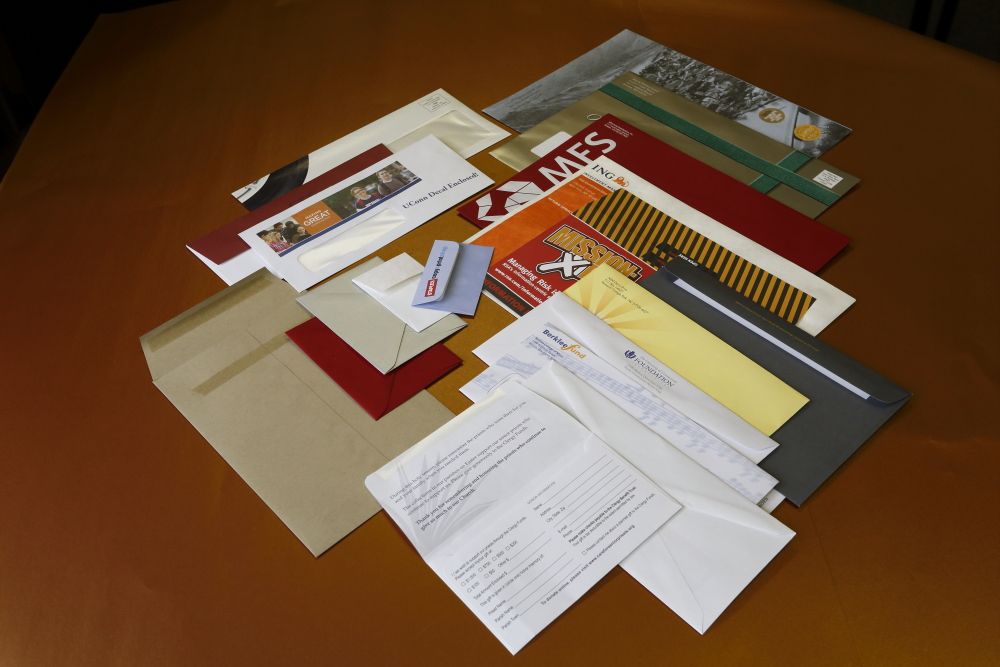
Envelopes come in all shapes and sizes but like many specialty items, they have their own descriptive language.
Here’s a quick tutorial on some of the most common envelope terms and what they mean.
Commercial envelope sizes – Probably the most common envelope size is the standard number 10. This envelope measures 4 1/8 inches in width and 9 ½ inches in length. I guess it’s called a #10 as that’s easier than a #9 1/2! The is the envelope that is used when you are mailing a standard letter-size sheet of paper because when you fold that in thirds, it fits perfectly inside. The next most popular size would be the standard number 9. Care to guess what those measurements are? Yes, that’s right: 3-7/8 x 8-7/8. I guess whoever came up with these designations decided that using whole numbers that are close to the dimensions was easier all around.
This type of rounding is consistent throughout all other sizes that are referred to by a number sign. A #6 ¾ envelope measures 3 5/8 x 6 ½. A #7 ¾ envelope measures 3 7/8 x 7 ½. Why not call them respectively a #7 or #8 envelope? Well there’s already a #7 which measures 3 ¾ x 6 ¾ so that one is taken. A #12 envelope measures 4 ¾ x 11. However, there’s already a #11 envelope and that one measures 4 ½ x 10 3/8. Oh yeah, the #14 envelope measures 5 x 11 ½. So go figure!
Large envelopes – Envelopes measuring 6 x 9 or over are usually broken down into two types based on the location of the flap. When the flap is on the shorter dimension side, the envelope is referred to as an Open End or Catalog style. When the flap is on the longer dimension side, it’s called an Open Side or Booklet style envelope. Those terms are interchangeable by style.
Again this is somewhat arbitrary. Someone, somewhere (I’m going to try to track them down!) apparently decided that the long dimension is a “side” and the short dimension is the “end”; not to mention the curious distinction between booklet and catalog. I mean, is it OK to put a catalog into a booklet style envelope and vice versa? I don’t think the Envelope Police will care one way or the other!
Seriously, I guess it’s necessary to have some type of agreed-upon standard as a basis for discussion which is how these came about. Anyone who has spoken to a customer trying to describe their envelope saying, “well, the flap is on the top” can understand the need for that. “Top” and “bottom” are relative terms. Open Side and Open End are not.
If you find all of this confusing and hard to remember, you’re not alone. Elite Envelope & Graphics has put together a handy Envelope Buying Guide which lists all the standard sizes and all sorts of other useful reference information for those that buy and sell envelopes. It’s compact and can fit right in your desk blotter so you can take it out and sound like an expert when you’re talking to a customer or prospect. E mail me and I'll send you one with our compliments!
